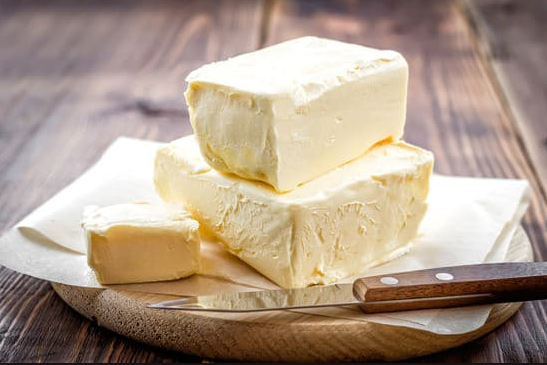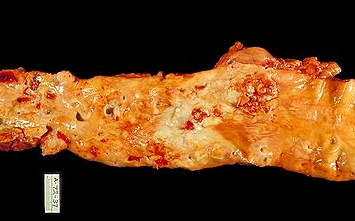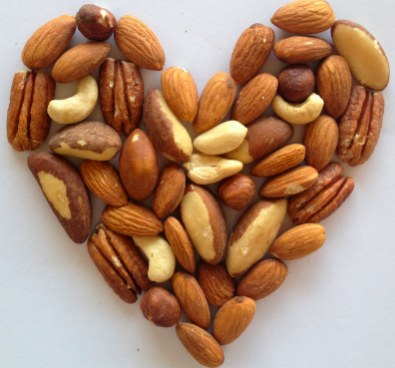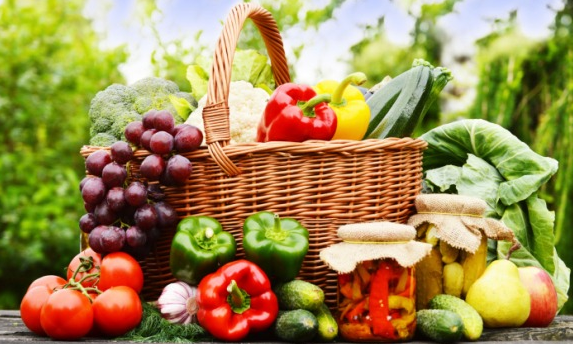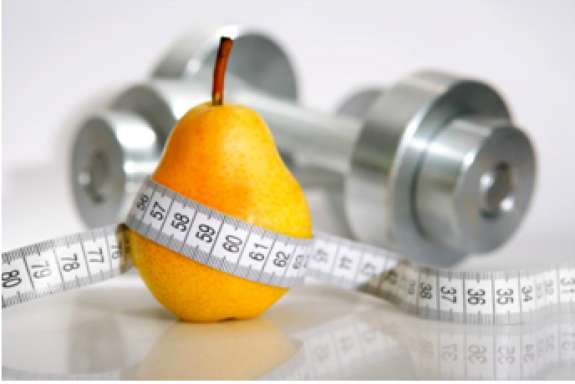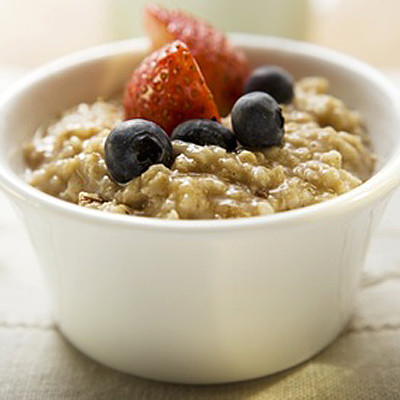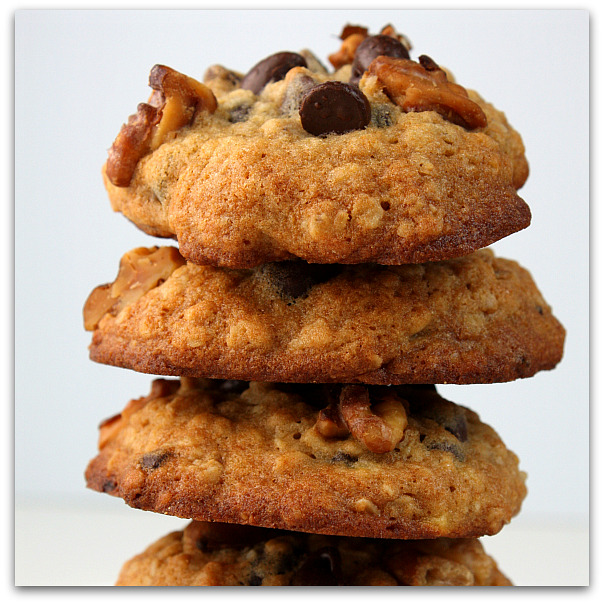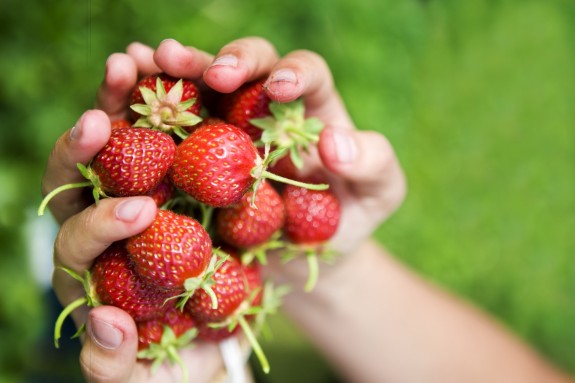Is Butter Good For You?
- At April 10, 2017
- By Katherine
- In Articles, News
 0
0
Butter is Back! And it’s even good for you? These declarations can be illustrated by the dizzying array of delicious butters now available: besides the old-fashioned American butters, you can easily find the extra rich Irish and French Butters, and a variety of premium, grass-fed, and organic farmers market butters extolled for their superiority, and with a premium price tag to match. Is this a food lover’s dream come true? Even some nutritionists have joined the bandwagon, and yours truly has been confused.
This seemingly good news may have started with the widely read earth shattering 2002 New York Times Magazine story, “What if it’s All Been a Big Fat Lie?” by Gary Taubes, featuring a big, fat, juicy piece of steak on the cover. More recently, Mark Bitman wrote a 2014 New York Times story covering a scientific study in the March 2014 Annals of Internal Medicine journal concluding that eating saturated fat, the so-called artery-clogging, demonic fat in butter, did not raise a person’s risk of heart disease. This exciting news, covered in just about every print and broadcast media outlet around the world, seemed to reverse decades of medical advice saying the opposite was true.
So, how do we hash out the truth?
This is an important question as one in every four deaths of Americans are from heart disease, so it’s a critical issue concerning the health of the majority of Americans – and my clients, who rely on me to get it right. After all, what’s more important than your health?
Upon exhaustive research, I’ve found the answer, interestingly, is not too different than conclusions made by Harvard scientist, Ancel Keys, and other respected scientists in the 1950s, 60s, and 70s: that the type of fat – not total fat – is responsible for the rise in heart disease because of its affect on blood cholesterol levels.
But how important is blood cholesterol level? A multitude of factors increase heart disease risk, such as calcification, inflammation, blood pressure, high triglycerides, diabetes, obesity, inactivity, smoking, family history, gender, and age. But, apparently, the correlation between high LDL(bad) cholesterol levels and heart disease has been well established and is still deemed significant to your risk of heart disease and your health. Conclusion: Keep LDL low (under 100) and HDL high (Over 40) to prevent heart disease risk.
And the most recent clinical study – the gold standard of scientific studies – has confirmed the worst (if you’re a butter lover, that is): Replacing the saturated fat in butter with unsaturated oils, not only raises HDL (good) cholesterol – which clears fat and reduces placque in the arteries – using oils instead of butter also reduces artery-clogging LDL (bad) cholesterol from the bloodstream. Conclusion: Use oil instead of butter to reduce heart disease risk. So, it seems the advice hasn’t changed since Ancel Keys discovered the superior health of Mediterraneans who used oil instead of butter.
In a recent Harvard School of Public Health’s analysis of the controversy, the scientists review decades of research showing the successful reduction in heart disease risk by doing things like replacing butter (high in saturated fat) with oil, replacing steak with salmon, and eating a plant-based diet based on fruits, vegetables and whole grains for the reduction of LDL cholesterol, the increase in HDL cholesterol, the resulting effect on lowering heart disease risk, and improving your overall health. Conclusion: “Butter is not back!” said Harvard’s Walter Willett.
So, what about those New York Times articles? Well… Caveat Emptor! Don’t believe everything you read, and consider the source (be sure the information comes from a peer-reviewed, scientific journal, and compare it to other established science).
To say this Swede, raised on cream and butter, is disappointed, is an understatement! But I still use luxurious butter sparingly, when I deem necessary!
And it’s a relief to know that all these years, helping my hundreds of clients lower their LDL and raise their HDL cholesterol levels by substituting butter with healthy oils and other lifestyle changes has not been a waste! WHEW! No rioting necessary 🙂
The Top 5 Food Do’s & Don’t’s Affecting Heart Disease Risk
- At March 27, 2017
- By Katherine
- In Articles, News
 0
0
In 2012, 45.4% of all heart disease deaths could be attributed to inadequate intake of certain foods, according to a recently published study in the Journal of the American Medical Association.
We’ve known for decades that what you eat significantly affects heart disease risk factors such as high blood pressure, high cholesterol, hemorrhages, diabetes, and inflammation. These results were based on a variety of different kinds of studies – epidemiologic, prospective, and clinical trials – set out to quantify the effect of specific foods on heart disease deaths.
The Intake of These Top 5 Foods, In Order of Predominance, Affect Your Heart Most Dramatically
1. High Sodium: Sodium, usually eaten in the form of salt, which is half sodium, pulls fluid into your blood vessels. This extra fluid increases the force of the blood against artery walls, reducing the flow of blood to your organs, making it harder for your heart to pump the blood efficiently, and damaging your heart. This excess force (or “pressure”) stresses the artery walls, potentially causing tears, blood clots, aneurysms and strokes. The recommendation is to take in less than 2,300 mg daily. Most Americans eat at least double that.
2. Low Nuts and Seeds: Epidemiological studies have found for decades that nut and seed eaters around the world have fewer heart attacks. The oil in nuts contains nutrients which seem to have a positive impact on heart function and increases good cholesterol, which helps prevent bad cholesterol from clogging the arteries. Also, studies show nuts and seeds help keep body weight down, a major risk factor for heart disease. Eat 2 ounces per day for maximum effect.
3. High Processed Meats: Processed meats such as hot dogs, bacon, sausage, bologna and ham are a major sodium source. They’re also usually high in saturated fats, which increase bad cholesterol. Since they are the highest dietary factor correlated with cancer, this gives you another reason to minimize processed meats. But when on the occasions that you might eat them, to minimize potential damage, pair with foods high in potassium and antioxidants, such as fruits and vegetables. Potassium and antioxidants may help neutralize the effects of sodium and the chemicals used in meat processing.
4. Low Omega-3-Fatty Acid Fish: Omega-3-Fatty Acids help prevent heart disease in many ways. They prevent irregular heart beat, reduce fatty placques inside artery walls, decrease blood clotting, tryglycerides (blood fats), increase good cholesterol and decrease inflammation. The American Heart Association recommends eating about 12 ounces of fatty fish weekly.
5. Low Fruit and Vegetables: Fruits and vegetables have many qualities responsible for the reduction of heart disease risk. They are high in potassium, which helps neutralize the effect of sodium on blood volume by pulling fluid from the arteries, reducing the blood’s pressure on the artery walls. They are high in water content, which studies show helps you feel more full with fewer calories, thus aiding weight loss (high body fat is the primary controllable risk factor for heart disease). Health authorities at the National Institutes of Health, and the U.S. Dietary Guidelines recommend 5 cups of fruits and/or vegetables daily. They should comprise at least half of the volume on your plates.
A New Recipe For Improving Seasonal Allergy Symptoms
- At March 06, 2017
- By Katherine
- In Articles, News
 0
0
My clients who suffer from seasonal allergies were hit hard this year – and earlier than usual. The warm February temperatures caused Washington’s flowering trees and shrubs to come out of their winter slumber gloriously. Our famed cherry trees and camellias are almost in full bloom. Even my hydrangeas’ buds are peaking out.
This beautiful display does not feel so beautiful for people with spring allergies. They often have symptoms, caused by the flowers’ pollen, which impact their quality of life: lack of sleep, reduced productivity at work or school, emotional stress and embarrassment…. and the medications designed to improve those symptoms, depending on the person, may be no better, and cause dry mouth, sleeplessness, and drowsiness. A new study set out to test if certain strains of beneficial probiotic bacteria would reduce symptoms and improve quality of life during allergy season for its sufferers.
The study, published in the American Journal of Clinical Nutrition, the first randomized, double blind, placebo-controlled trial – the gold standard of human research – testing this hypothesis, divided 178 allergy sufferers into two groups and tested them during spring allergy season for eight weeks. One group received the probiotic supplement*, the other received the placebo.
The study found the probiotic group experienced improved quality of life symptoms compared to the placebo group. That said, scientists are still working out which of the beneficial probiotic bacteria work best with individual allergens, when to start taking them, and which probiotic bacteria will react most positively with a person’s specific microbiota (the 100 million bacterial organisms in your digestive tract), as each person’s microbiota is different. They mentioned that starting probiotics at a younger age may be more effective, too.
In the meantime, I believe eating foods which naturally contain beneficial probiotic bacteria, such as yogurt, is the best solution for trying to reduce your allergy symptoms. In fact, I recommend eating yogurt every day! Though, I don’t recommend counting on supplements because, as of now, no probiotic supplements have passed the tests allowing them to make a health claim.
Here’s one of my favorite yogurt recipes developed by Georgetown resident, cookbook author, and my friend Najmieh Batmanglij, and found in my book, Diet Simple…
Najmieh Batmanglij’s Yogurt and Spinach Dip
*(Lactobacillus gasseri KS-13, Bifidobacterium bifidum G9-1, and Bifidobacterium longum MM-2 provided by Wakunaga of America Co Ltd)
Vitamin D Boosts Muscle Strength, Power & Velocity While Lowering Body Fat
- At February 21, 2017
- By Katherine
- In Articles, News
 0
0
 A new study reports that Vitamin D effects certain genes which are involved in muscle and fat mass and function. This could mean there is an important yet simple solution to the natural decline of muscle as we age, which could have many benefits – decreasing disease, falls, broken bones, and subsequent hospital and nursing home stays.
A new study reports that Vitamin D effects certain genes which are involved in muscle and fat mass and function. This could mean there is an important yet simple solution to the natural decline of muscle as we age, which could have many benefits – decreasing disease, falls, broken bones, and subsequent hospital and nursing home stays.
As we age, muscle mass and strength decrease, to the point where our muscles actually become “marbled” with fat (think bacon!), reducing their ability to function and our ability to live independent lives, according to the National Institute on Aging. That’s because muscle mass is essential for movement, balance, and even immune function. So if we don’t strength train as older adults, we’re more likely to lose our independence and end up in nursing homes, creating a massive public health burden, according to the study published in the journal PLOS ONE, and partly funded by the National Institutes of Health.
That said, we’ve known for years, and I’ve written about, the importance of working out, eating the right amount of protein, carbohydrate and fat, eating an anti-inflammatory, anti-oxidative diet filled with plant nutrients like polyphenols, (found in tea, fruits & vegetables), and living a low stress life. But there are other factors which come into play that scientists are studying. One may be Vitamin D, the “sunshine vitamin.”
In the past several years, researchers are finding that Vitamin D may be instrumental in preventing diseases from colds, heart disease to cancer. Even multiple sclerosis, parkinson’s disease and insulin dependent diabetes. And now, Vitamin D seems to be correlated with an increase in muscle mass and a decrease in body fat. Yet the most needy population, the elderly, is usually deficient. That’s because Vitamin D is produced by being exposed to sunshine. Today, many of us don’t go outdoors and when we do we’re wearing sunscreen. That particularly pertains to the aging population, whose muscle mass can mean independence – or the loss of it.
How much Vitamin D does improving muscle mass require? What should your blood level be? Ask your doctor, but perhaps also share this recent data with him/her: “[The National Academy of Sciences’ Food and Nutrition Board’s] review of data suggests that persons are at risk of deficiency relative to bone health at serum 25OHD levels of below 30 nmol/L (12 ng/mL). Some, but not all, persons are potentially at risk for inadequacy at serum 25OHD levels between 30 and 50 nmol/L (12 and 20 ng/mL). Practically all persons are sufficient at serum 25OHD levels of at least 50 nmol/L (20 ng/mL). Serum 25OHD concentrations above 75 nmol/L (30 ng/mL) are not consistently associated with increased benefit.”
Most of us will need to get Vitamin D from a supplement because it’s in very few foods (egg yolks, salmon) and most of us don’t get enough sunlight. Again, ask your doctor about your personal situation. But, the latest recommendation from some Vitamin D researchers is 1,000 IU per day but up to 4,000 daily is safe (Vitamin D can be toxic at much higher levels)… This level is higher than the official National Academy of Sciences’ Food and Nutrition Board because they determine how much Vitamin D is needed to prevent rickets (a Vitamin D deficiency disease which softens the bones). They say the jury is still out as to how much is good for your overall health. The NAS scientists believe that more definitive research needs to be done to change their recommendation. In the meantime, it doesn’t hurt for healthy people to increase their vitamin D intake to up to 4,000 IU daily.
A Lethal, Cancer-Causing Bacteria Killed by Yogurt and Kefir
- At August 07, 2016
- By Katherine
- In Articles, News
 0
0
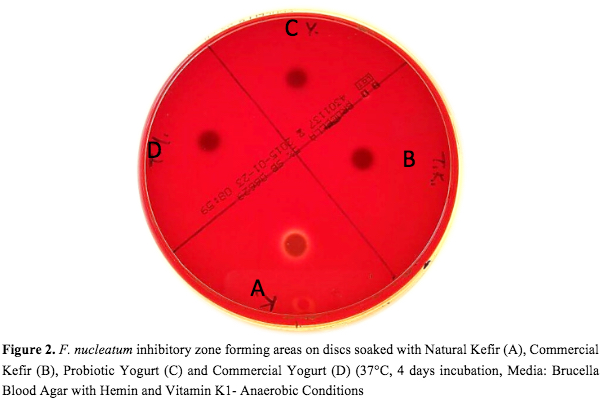
Inhibition of F. nucleatum by natural kefir, probiotic yogurt, commercial yogurt and commercial kefir samples
You’ve all heard about the health benefits of the probiotic bacteria found in yogurt and other similar fermented dairy products such as kefir. This recently published study provides more evidence of yogurt cultures’ actions against serious disease-causing pathogens, such as Fusobacterium nucleatum.
F. nucleatum can cause diseases in the mouth, teeth, brain, pleura, lungs and liver. It induces fetal death in pregnant women and can lead to colon cancer by binding to the lining of the gastrointestinal tract, according to a recent study in the journal, Functional Foods in Health and Disease.
In this study, when yogurt and kefir were added to a petri dish filled with F. nucleatum and incubated for 3 days, there appeared clear zones where the yogurt and kefir were placed. Thus showing inhibition of the growth of F. nucleatum. Interestingly, the plain milk used for the yogurt and kefir did not show an inhibitory effect, but the higher the concentration of the kefir and yogurt probiotic bacteria, the more F. nucleatum’s growth was inhibited.
“Previous studies have indicated that fermented dairy products can cause probiotic effects such as improvement in digestive system health, serum cholesterol reduction, and improvement in lactose tolerance, improved immune function, control of irritable bowel symptoms, as well as anticarcinogenic properties. Kefir is known to have positive effects on health and especially intestinal health. Therefore, these findings are important for showing an inhibition effect of fermented dairy products against a pathogen and possible carcinogen. These results suggest that regular consumption of natural fermented dairy products especially kefirshould be included in a functional diet. The impact of these cultured dairy products could be promising and warrants further investigation with in vivo studies,” according to the authors of the study.
Fresh Kale and Summer Peach Salad with Toasted Almonds and Balsamic Vinaigrette
- At July 31, 2016
- By Katherine
- In News, Recipes
 1
1
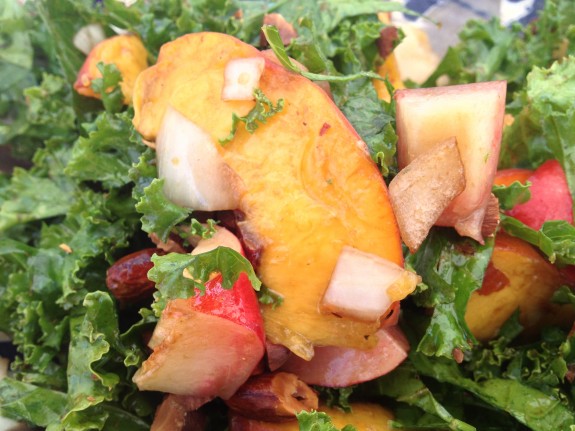 The local peaches at this year’s farmers’ markets are exceptional: sweet, juicy, flavorful. This recipe is a perfect way to feature them at any gathering. And it’s always a favorite! Excerpted from my book: Diet Simple Farm to Table Recipes: 50 New Reasons to Cook in Season!
The local peaches at this year’s farmers’ markets are exceptional: sweet, juicy, flavorful. This recipe is a perfect way to feature them at any gathering. And it’s always a favorite! Excerpted from my book: Diet Simple Farm to Table Recipes: 50 New Reasons to Cook in Season!
Serves 6
Vinaigrette:
3 Tablespoons Extra Virgin Olive Oil
1 Tablespoon Balsamic Vinegar
Salt and Pepper to taste
Salad Ingredients:
6 Handfuls of fresh Kale (or other greens), washed, tough stems removed, and torn into bite-sized pieces
2 Cups Fresh Sliced Summer Peaches and/or any seasonal Berries
2 Ounces toasted slivered Almonds
½ Sweet Onion, peeled and sliced
In a large bowl, add the olive oil, vinegar, salt and pepper. Whisk together. Add the kale, onion, almonds, and peaches and toss together. Serve immediately.
Katherine’s Diet Tip #2: Download Your Calories!
- At June 06, 2016
- By Katherine
- In Articles, News
 0
0
What’s one of the most effective, enjoyable, and simple changes – for weight loss and health – you can make in your eating? Simple: Add breakfast to your day. Katherine explains to Washingtonian Magazine…
Also, CNN spoke with Katherine about breakfast. Here’s a part of that conversation.
What exactly is it about breakfast that makes it so beneficial? And are all are breakfasts created equal? A study from Pediatrics looked at 2,000 teenagers and found that teens who ate breakfast weighed less, exercised more and ate healthier food than their classmates who didn’t eat breakfast. More studies have confirmed this link with breakfast and adults, too.
CNN: Explain the real benefits of eating breakfast. In your experience, have you seen among your patients the same results this study showed: that people who aren’t eating breakfast actually weigh more? How is that?
Tallmadge: In one study, people who ate more in the beginning [of] the day ate fewer overall. As soon as you start eating, you start raising your metabolism; your whole body is burning calories earlier in the day. Helps control your appetite. People who skip breakfast — victims of vending machines. The pickers — they eat overall more calories, tend to eat more. In another study, people who ate larger breakfasts and lunches, with lighter dinners, were more likely to manage their weight.
CNN: What about for the people who say, “I just don’t have time to eat breakfast”? What are your tips?
Tallmadge: I know we’re all busy, but everyone has to make time to eat breakfast. In Diet Simple I have tons of ways people can fit breakfast into a busy day!
Scientific studies confirm breakfast eaters get more nutrients for the whole day, are more likely to lose and maintain healthy weights, have more energy, concentrate better, and eat fewer overall calories during the day.
I have great ideas for easy and delicious breakfasts in Diet Simple. My favorite breakfast? a warm bowl of oatmeal cooked in milk with fruit and nuts… even a peanut butter sandwich with yogurt and fruit, or eggs on whole grain toast with spicy chicken sausage… Do you like lox on a whole grain bagel? How about whole grain blueberry pecan pancakes? All excellent choices… Bon Appetit!
Katherine’s Diet Tip #1: Minesweep for Calorie Bombs!
- At May 31, 2016
- By Katherine
- In Articles, News
 0
0
Are you ready for summer? I mean, is your body ready … to shed the heavy coats and sweaters, to wear lighter weight, more form-fitting clothes? If not, or if you would just like to learn some good tips, follow me here every Monday with proven strategies to lose weight, improve your health or just increase your knowledge about nutrition. Through early summer, we’ll be losing weight together, so you’ll be ready for the warmer days to come!
Losing weight is not about discipline or will power. It’s about controlling your environment. Period.
We all have different strengths and weaknesses which must be considered when cutting calories or making any other healthful lifestyle changes. Let’s talk about me, Katherine Tallmadge. One of my main weaknesses is chocolate. I can’t stop with one piece. That’s simply not “normal” for me. I’ll occansionally indulge my passion with a small piece of dark chocolate, but I’ve learned never to bring home a full box of chocolate-covered caramels. It will be gone in a day or two, max.
I’m no better with chips. I have no self-control, and I know it. So I’ll occasionally buy a 1-ounce bag. But a big bag? Never!
One of my strengths (finally, something positive!) is that I love fruit. I stock up on cut-up fruit so I always have it at my fingertips.
You have to recognize your own “mines.” I advise everyone to minesweep the kitchen for those calorie bombs that can explode your weight. Have a hard time resisting ice cream? Then get rid of the half gallon. Candy bar pitfall? Toss out the leftovers from the Easter season.
Minesweeping your kitchen periodically to get rid of things you shouldn’t have in the house in the first place will save a tremendous amount of calories over time. Add the things that you like and should be eating, and you’ll do even better! Be good to yourself and make your negative behaviors hard and your good behaviors easy.
If just one candy bar is replaced by an apple every day, you’ll save 175 calories. That adds up to about 18 pounds lost in one year!
* Excerpted from “Diet Simple: 195 Mental Tricks, Substitutions, Habits & Inspirations” (LifeLine Press) by Katherine Tallmadge
Prenatal Fruit Intake Boosts Cognition in Infants + Springtime Strawberry Salad
Some of the most interesting nutrition studies I’ve read have to do with the prenatal diet and subsequent effects in children. The subject is vast and the outcomes amazing. Did you know that when pregnant moms drink high amounts of carrot juice during pregnancy, their toddlers are more likely to choose carrots over other vegetables? Or, that the more varied a pregnant mom’s diet, the more her child will choose and enjoy a wider variety of foods? All proven by science!
So it’s no surprise that a new study published in The Lancet found that prenatal fruit consumption is correlated with superior cognition in the mothers’ one-year-old infants – though there was no effect if fruit was only fed to the child during the year after birth. So, what may explain this finding?
Evolution may explain, in part, this advantage of fruit-eating. During the neolithic (stone age) period about 12,000 years ago and for thousands of years thereafter, we subsisted mainly on fruits and vegetables; which comprised about 65% of our calories, according to S. Boyd Eaton, from the department of Anthropology at Emory University in an interview and in his essay, “Evolution, Diet and Health.” That may mean that brain development is still dependent on the same high level of vitamins, minerals, antioxidants, and other positive nutrients that kind of diet would provide. And this could help explain why, even today, a high fruit diet is correlated with so many positive health benefits: reduced incidence of diabetes, heart disease, cancer, arthritis, eye disease, and other conditions. Keep in mind, too, that the health-giving Mediterranean Diet had 12 to 13 servings of fruits and vegetables daily, and it’s known as one of the healthiest diets on the planet.
Fruit is so easy to eat every day, and the local fruit season is just beginning to get exciting. I was most fortunate to receive one of the most delicious dishes I’ve ever eaten this weekend when my friend and neighbor, Mike Gardner, brought me his salad:

